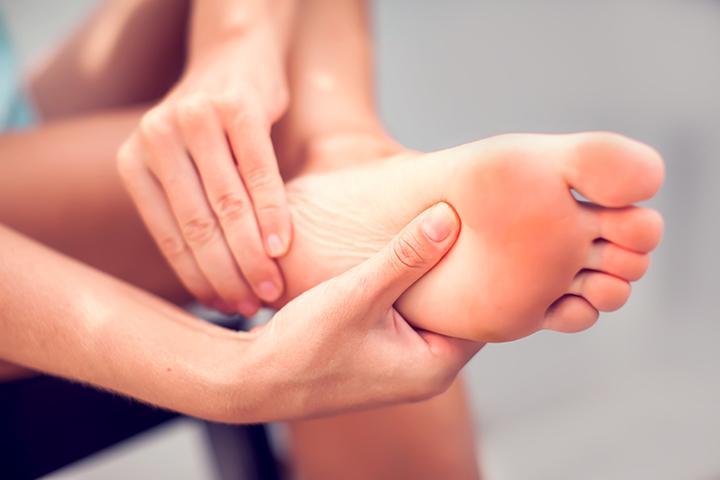When considering heart health and potential arterial blockages, most people think of symptoms like chest pain, shortness of breath, or high blood pressure. However, your feet—often overlooked—can serve as early warning signs for serious cardiovascular conditions, including heart disease and clogged arteries. These early indicators can provide crucial insights into underlying issues such as peripheral artery disease (PAD) and coronary artery disease (CAD), both of which involve plaque buildup that restricts blood flow.
Understanding Peripheral Artery Disease (PAD)
Peripheral artery disease (PAD) is a condition where the arteries become narrowed or blocked due to plaque buildup, most often affecting the legs and feet. This plaque consists of cholesterol, fat, and other substances, which cause the arteries to stiffen and reduce blood flow to the extremities.
Symptoms of PAD in the Feet
The first signs of PAD often appear in the feet and legs, signaling that blood circulation is compromised. Some common symptoms include:
- Cold Feet: Reduced blood flow can make it difficult for warm blood to reach the extremities, leading to persistent cold feet even in warm environments.
- Slow-Healing Wounds: Minor cuts or blisters on the feet may take longer to heal, indicating poor blood supply.
- Pain While Walking: Cramping or aching in the feet and legs, especially during physical activity, may subside when resting.
- Discoloration: Due to insufficient blood flow, feet may take on a pale, blue, or purplish hue.
If left untreated, PAD can lead to severe complications, such as critical limb ischemia, which may result in infection, gangrene, or even amputation. Furthermore, PAD often signifies that other vital arteries in the body, including those leading to the heart and brain, are also affected by atherosclerosis.
What is Coronary Artery Disease (CAD)?
Coronary artery disease (CAD) is another form of atherosclerosis that affects the arteries supplying blood to the heart. When these arteries become clogged with plaque, the heart receives less oxygenated blood, increasing the risk of heart attacks.
Incredibly, CAD can also manifest in the feet through several symptoms, including:
- Swelling (Edema): Poor heart function can cause fluid retention, resulting in swelling in the feet and ankles.
- Tingling or Numbness: Decreased circulation due to CAD can lead to sensations of pins and needles in the toes.
- Skin Changes: The skin on the feet may become shiny and tight, a sign of fluid buildup and poor circulation.
- Foot Pain at Rest: Unlike PAD, CAD-related foot pain can persist even when not active, often worsening at night.
- Brittle Toenails: Insufficient blood flow may lead to weak, thickened, and brittle toenails.
According to the American Heart Association (AHA), CAD risk is rising among children and young adults, making early preventive measures essential for long-term heart health. A heart-healthy lifestyle—featuring good nutrition, regular exercise, and weight management—can slow the progression of CAD and potentially reverse some effects before they cause lasting damage.
Preventing PAD and CAD
Prevention is key when it comes to managing the risks associated with both PAD and CAD. Below are effective strategies to protect your heart and feet:
- Exercise Regularly: Physical activity helps improve circulation and reduce plaque buildup. The Centers for Disease Control and Prevention recommends 30 minutes of moderate exercise, such as brisk walking or swimming, most days of the week.
- Adopt a Heart-Healthy Diet: A diet rich in vegetables, fruits, whole grains, and lean proteins supports arterial health. Avoid processed foods, sugary snacks, and unhealthy fats.
- Quit Smoking: Smoking constricts blood vessels and impairs circulation, making it a significant risk factor for both PAD and CAD.
- Manage Stress: Chronic stress can contribute to high blood pressure and heart disease. Practices like meditation, yoga, and deep breathing exercises can help lower stress levels.
- Control Diabetes: For individuals with diabetes, keeping blood sugar levels under control is crucial in preventing complications that could affect both the feet and cardiovascular system.
- Regular Medical Check-Ups: If you have a history of heart disease, diabetes, or high blood pressure, regular doctor visits are essential for early detection and prevention.
By paying attention to your feet and noticing changes in circulation, you can catch early signs of cardiovascular issues before they become serious. Cold feet, cramping, swelling, or skin discoloration shouldn’t be ignored, as they may signal underlying heart disease or arterial blockages. Taking proactive steps to manage your health can help prevent complications and maintain overall well-being.
